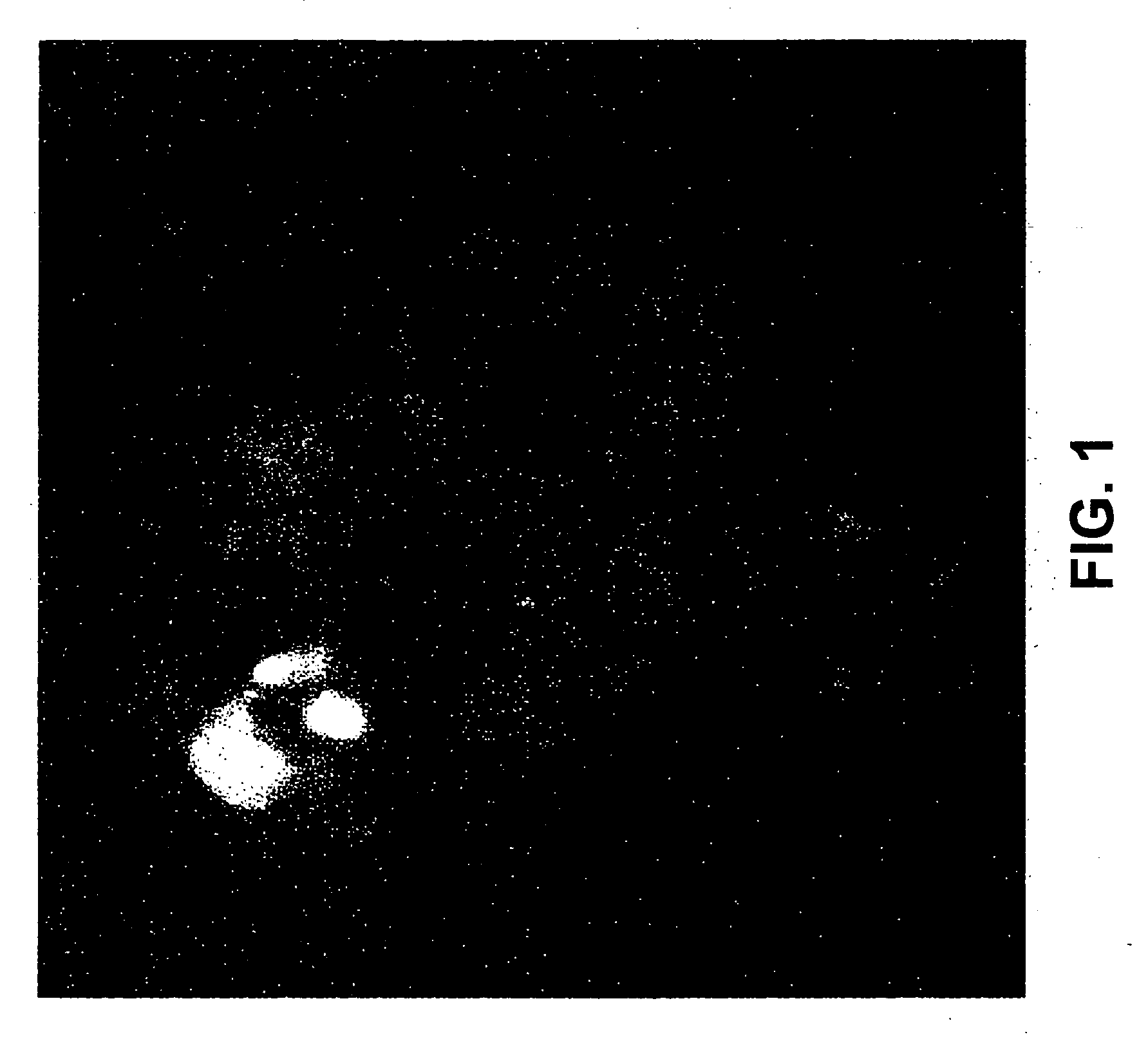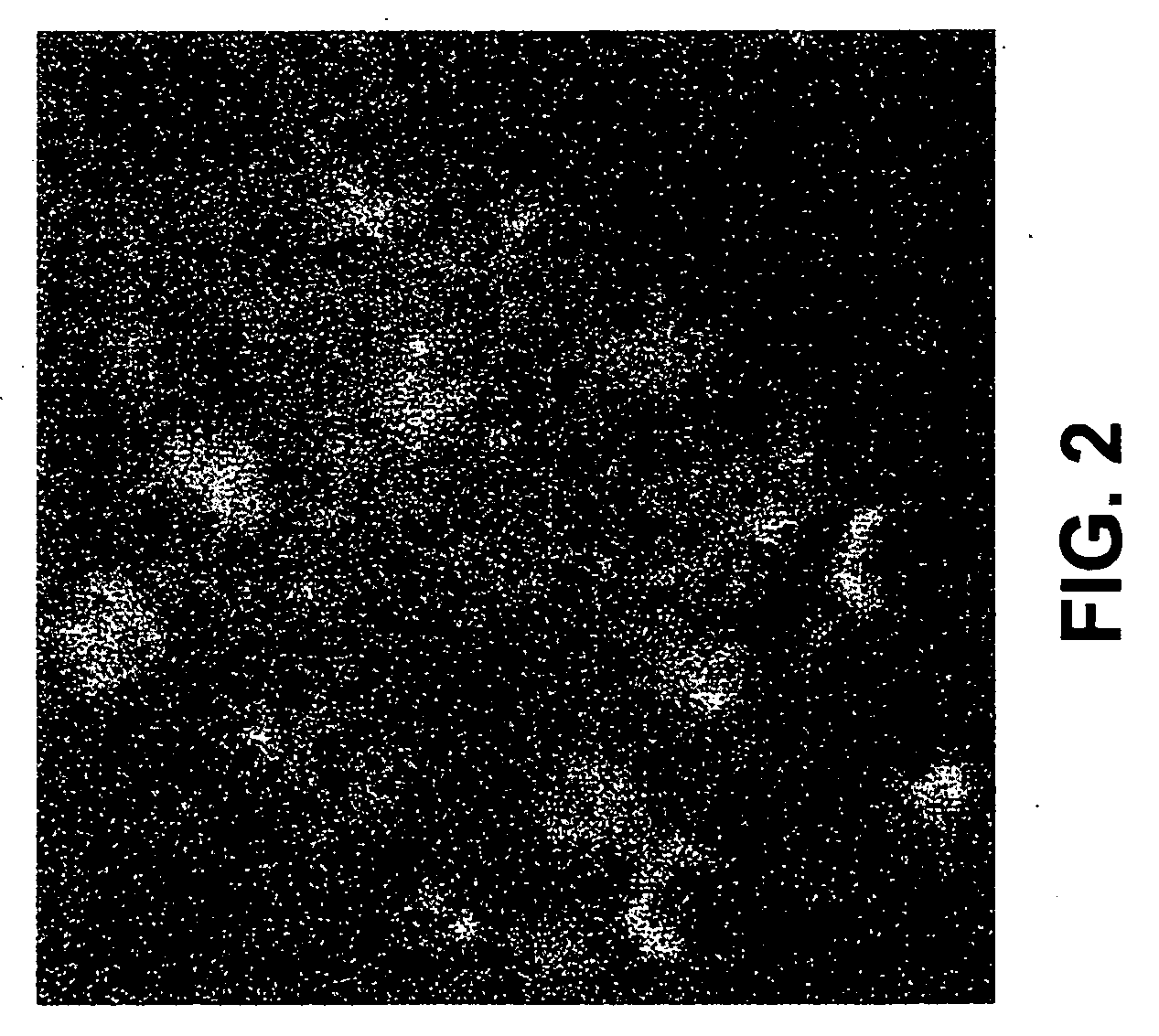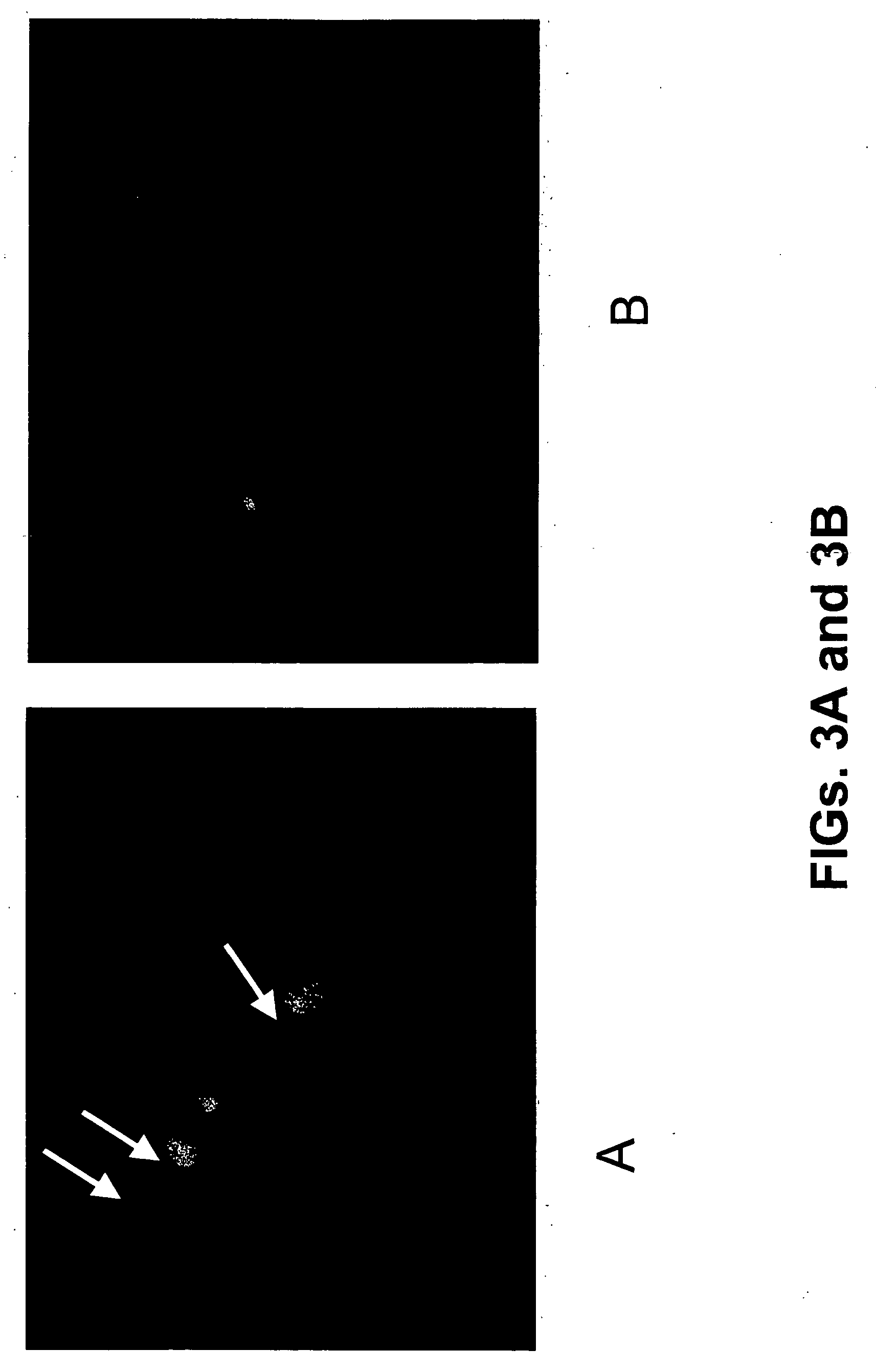Complex for facilitating delivery of dsRNA into a cell and uses thereof
a technology of dsrna and cell, applied in the field of complex for facilitating the delivery of dsrna into a cell, can solve the problems of low transfection efficiency, ineffective silencing, and inefficient cellular uptake of unmodified antisense nucleic acid, and achieve the effect of avoiding many of the safety, availability and efficacy concerns, and facilitating the delivery of dsrna into the cell
- Summary
- Abstract
- Description
- Claims
- Application Information
AI Technical Summary
Benefits of technology
Problems solved by technology
Method used
Image
Examples
example 1
[0062] Targets for siRNA were designed for various mRNAs. A general strategy for designing siRNA targets comprises beginning with an AUG stop codon and then scanning the length of the desired cDNA for AA dinucleotide sequences. The 3′ 19 nucleotides adjacent to the AA sequences are recorded as potential siRNA target sites. The potential target site can then be compared to the appropriate genome database, so that any target sequences that have significant homology to non-target genes can be discarded. Multiple target sequences along the length of the gene should be located, so that target sequences are derived from the 3′, 5′ and medial portions of the mRNA. Negative control siRNAs can be generated using the same nucleotide composition as the subject siRNA, but scrambled and checked so as to lack sequence homology to any genes of the cells being transfected. (Elbashir, S. M., et al., “Duplexes of 21-nucleotide RNAs mediate RNA interference in cultured mammalian cells,”Nature, 411, 49...
example 2
[0064] Penetratin1 (mw 2503.93) (QBiogene, Inc., Carlsbad, Calif.) was reconstituted to 2 mg / ml in RNase / DNase sterile water (0.8 mM). siRNA (double-stranded, annealed, and synthesized with a 5′-thiol group on the sense or antisense strand) was reconstituted to 88 μM in RNase- / DNase-free sterile water. To link the penetratin1 to the siRNA, 25 μl of penetratin1 were added to 25 μl of the diluted oligo, for total volume of 250 μl. This mixture was incubated for 15 min at 65° C., followed by 60 min at 37° C., then stored at 4° C. Alternatively, where only small amounts of the mixture are required, these may be aliquoted and stored at −80° C. Linkage can be checked by running the vector-linked siRNA and an aliquot that has been reduced with DTT on a 15% non-denaturing PAGE. siRNA can be visualized with SyBrGreen (Molecular Probes, Eugene, Oreg.).
example 3
[0065] Cell cultures used in Examples 5-9 were prepared as follows. Sympathetic neuron cultures were prepared from 1-day-old wild-type and caspase-2− / − mouse pups (Bergeron et al., “Defects in regulation of apoptosis in caspase-2-deficient mice,”Genes Dev., 12, 1304-1314 (1998)), as previously described (Troy, et al., “Caspase-2 mediates neuronal cell death induced by beta-amyloid,”J. Neurosci., 20, 1386-1392 (2000)). Cultures were grown in 24-well collagen-coated dishes for survival experiments, and in 6-well collagen-coated dishes for RNA and protein extraction in RPMI 1640 medium (Omega Scientific, Tarzana, Calif.; ATCC, Manassas, Va.) plus 10% horse serum with mouse NGF (100 ng / ml). One day following plating, uridine and 5-fluorodeoxyuridine (10 μM each) were added to the cultures, and left for three days to eliminate non-neuronal cells. (Less than 1% non-neuronal cells remain after 3 days.)
[0066] Hippocampi were dissected from embryonic day 18 (E18) rat fetuses, dissociated by...
PUM
| Property | Measurement | Unit |
|---|---|---|
| total volume | aaaaa | aaaaa |
| total volume | aaaaa | aaaaa |
| permeable | aaaaa | aaaaa |
Abstract
Description
Claims
Application Information
 Login to View More
Login to View More - R&D
- Intellectual Property
- Life Sciences
- Materials
- Tech Scout
- Unparalleled Data Quality
- Higher Quality Content
- 60% Fewer Hallucinations
Browse by: Latest US Patents, China's latest patents, Technical Efficacy Thesaurus, Application Domain, Technology Topic, Popular Technical Reports.
© 2025 PatSnap. All rights reserved.Legal|Privacy policy|Modern Slavery Act Transparency Statement|Sitemap|About US| Contact US: help@patsnap.com



